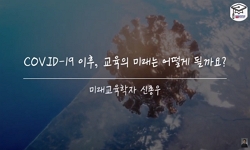Purpose: Coronavirus disease 2019 (COVID-19) causes various neurological symptoms in children, as well as respiratory symptoms, and the number of reported cases is increasing with the spread of severe acute respiratory syndrome coronavirus 2 (SARS-CoV...
http://chineseinput.net/에서 pinyin(병음)방식으로 중국어를 변환할 수 있습니다.
변환된 중국어를 복사하여 사용하시면 됩니다.
- 中文 을 입력하시려면 zhongwen을 입력하시고 space를누르시면됩니다.
- 北京 을 입력하시려면 beijing을 입력하시고 space를 누르시면 됩니다.
https://www.riss.kr/link?id=A108212522
-
저자
Donghwa Yang (Division of Pediatric Neurology, Department of Pediatrics, National Health Insurance Service Ilsan Hospital, Goyang, Korea) ; Hoon-Chul Kang
- 발행기관
- 학술지명
- 권호사항
-
발행연도
2022
-
작성언어
-
- 주제어
-
KDC
516
-
등재정보
KCI등재후보
-
자료형태
학술저널
-
수록면
111-119(9쪽)
- DOI식별코드
- 제공처
-
0
상세조회 -
0
다운로드
부가정보
다국어 초록 (Multilingual Abstract)
Methods: We retrospectively analyzed the medical records of patients under the age of 18 diagnosed with COVID-19 and admitted to National Health Insurance Service Ilsan Hospital using real-time reverse transcription-polymerase chain reaction from December 2020 to March 2022. We reviewed data on the age of confirmed COVID-19 patients, fever, and respiratory, gastrointestinal, and neurological symptoms. We evaluated the chief complaints of hospitalization and classified them as non-neurological or neurological, according to the chief complaints that caused the most discomfort.
Results: Among 376 patients, 63 (16.8%) and 313 (83.2%) patients were classified as having neurological and non-neurological symptoms, respectively. The most common neurological symptoms were headache (49, 13.0%), followed by seizures (39, 10.4%), myalgia (24, 6.4%), and dizziness (14, 3.7%). Additionally, there were patients with anosmia (nine, 2.4%), ageusia (four, 1.1%), and visual disturbance (two, 0.5%). Of the 39 patients who experienced seizures, 15 (15/39, 51.7%) had no symptoms except fever, and seizures were the only main presenting symptom of SARS-CoV-2 infection.
Conclusion: Neurological symptoms are common in pediatric COVID-19 patients. Seizures can be an early symptom of SARS-CoV-2 infection and should not be underestimated during the COVID-19 pandemic.
Purpose: Coronavirus disease 2019 (COVID-19) causes various neurological symptoms in children, as well as respiratory symptoms, and the number of reported cases is increasing with the spread of severe acute respiratory syndrome coronavirus 2 (SARS-CoV-2) variants. This study aimed to investigate the neurological symptoms and incidence in pediatric patients hospitalized with COVID-19.
Methods: We retrospectively analyzed the medical records of patients under the age of 18 diagnosed with COVID-19 and admitted to National Health Insurance Service Ilsan Hospital using real-time reverse transcription-polymerase chain reaction from December 2020 to March 2022. We reviewed data on the age of confirmed COVID-19 patients, fever, and respiratory, gastrointestinal, and neurological symptoms. We evaluated the chief complaints of hospitalization and classified them as non-neurological or neurological, according to the chief complaints that caused the most discomfort.
Results: Among 376 patients, 63 (16.8%) and 313 (83.2%) patients were classified as having neurological and non-neurological symptoms, respectively. The most common neurological symptoms were headache (49, 13.0%), followed by seizures (39, 10.4%), myalgia (24, 6.4%), and dizziness (14, 3.7%). Additionally, there were patients with anosmia (nine, 2.4%), ageusia (four, 1.1%), and visual disturbance (two, 0.5%). Of the 39 patients who experienced seizures, 15 (15/39, 51.7%) had no symptoms except fever, and seizures were the only main presenting symptom of SARS-CoV-2 infection.
Conclusion: Neurological symptoms are common in pediatric COVID-19 patients. Seizures can be an early symptom of SARS-CoV-2 infection and should not be underestimated during the COVID-19 pandemic.
목차 (Table of Contents)
- Introduction
- Materials and Methods
- Results
- Discussion
- References
- Introduction
- Materials and Methods
- Results
- Discussion
- References
동일학술지(권/호) 다른 논문
-
- 대한소아신경학회
- Hee-Jeong Kang
- 2022
- KCI등재후보
-
SARS-CoV-2 Neurotropism in a 12-Year-Old Filipino Boy with Focal Encephalitis
- 대한소아신경학회
- Anna Dominique Py Castro
- 2022
- KCI등재후보
-
A Case of Intellectual Disability without Epilepsy Associated with a Pathogenic Variant of STXBP1
- 대한소아신경학회
- Geum-ji Shin
- 2022
- KCI등재후보
-
- 대한소아신경학회
- Minakshi Balwani
- 2022
- KCI등재후보





 스콜라
스콜라


